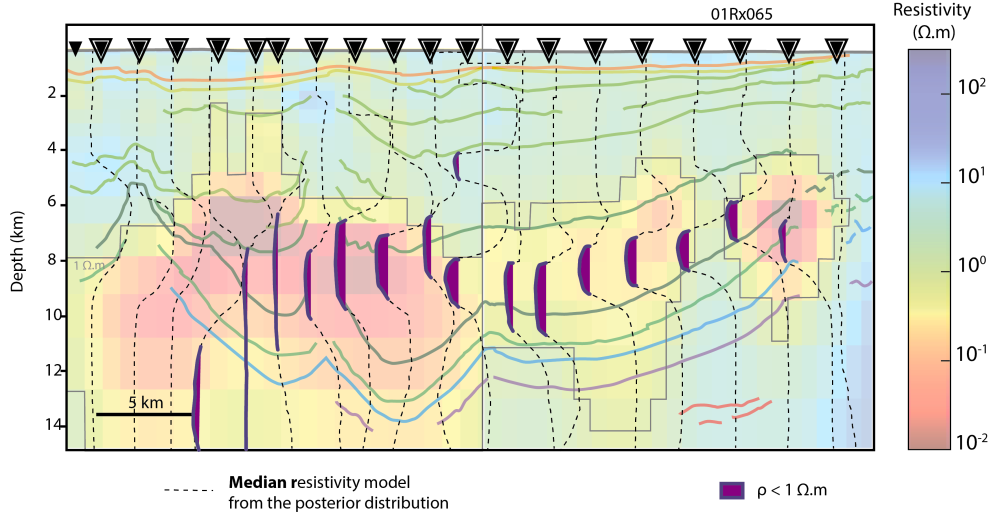Disputas og prøveforelesning er i Auditorium 1 i Geologibygningen. I noen tilfeller vil prøveforelesning og disputas være mulig å delta på digitalt, i så fall blir det lagt ut en lenke til Zoom.
Prøveforelesning
Fredag 26 januar, 10:15-11:00, Aud 1, Geologibygningen:
The role of artificial intelligence in geophysics: current and future
Kreeringssammendrag
Solens strålingsenergi påvirker jordens magnetiske skjold, noe vi kan utnytte for å se ulike strukturer i jordens indre. I avhandlingen er det utviklet en ny modell over geoelektriske strukturer under havbunnen i Barentshavet ved hjelp av en automatisert prøve- og feileprosess kalt inversjon. Våre resultater antyder at den sprø jordskorpen kan bli så sterkt fortynnet at salte væsker kan sirkulere og reagere med den øvre mantelen. Denne reaksjonen frigjør hydrogen, en potensiell kilde til karbonfri energi.
Hovedfunn
Populærvitenskapelig artikkel om Corseris avhandling:
Using solar activity to see deep into the Earth’s crust
The disturbance of the geomagnetic field by solar particles can help us see deep into the Earth’s interior. The way electrical current flows in geological layers often depends on the conductive properties of the fluid filling the empty spaces within the rock. When the Earth’s crust is stretched, seawater can move down to the viscous layer beneath, called the mantle. Here, we investigate the geoelectrical properties of a hyperextended rift system in the Barents Sea and unveil possible fluid circulation between sediments and the upper mantle. This is important because seawater reacts with the mantle rocks to release natural hydrogen, a potential source of decarbonized energy.
The foundation of this doctoral work lies in the analysis of electromagnetic recordings collected on the seafloor of the Barents Sea. A new model of the Earth geoelectrical structures is obtained with an automated trial-and-error process called inversion. However, multiple models can equally explain the data. Therefore, we employed a probabilistic approach complemented by machine learning to generate thousands of best-fit models. We identify two likely conductors in deeply buried sediments and upper mantle. We interpret them as rocks filled with saline fluids, partially consumed through a geochemical reaction with mantle rocks that releases natural hydrogen.

Foto og annen informasjon:
Pressefoto: Romain Corseri, portrett; 650px. Foto: Privat
Annet bildemateriale: Figur med beskrivelse og kreditering som spesifisert i artikkelen over, størrelse 1920px.
